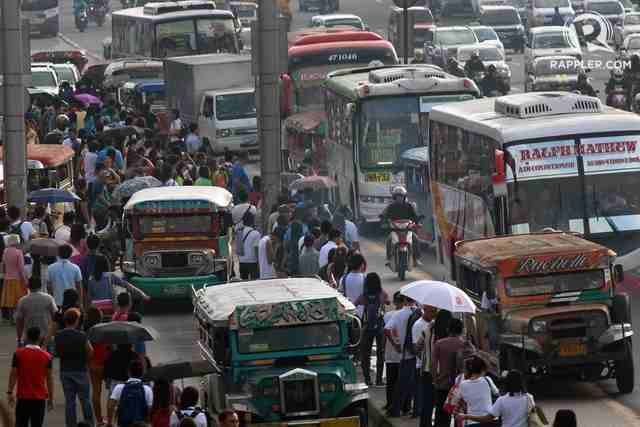SUMMARY
This is AI generated summarization, which may have errors. For context, always refer to the full article.

MANILA, Philippines – The Department of Finance (DOF) defended its proposed tax reform package from critics who say aspects of it, such as the higher oil and automobile tax, are “anti-poor.”
In a Palace briefing on Friday, January 27, Finance Undersecretary Karl Kendrick Chua sought to explain why the proposed tax reform package would hurt the rich more than the poor.
In the proposed package, diesel excise rates will be increased incrementally to P6.24 per liter by 2020, starting with a P3-increase in the second quarter of 2017. For gas, the proposed excise tax is P10.40 per liter by 2020, starting with P4.35-per-liter tax in the second quarter of 2017.
The increase is expected to jack up prices for these oil products, used mainly for transportation, power generation, and cooking.
“Many are saying this is anti-poor but the truth is, the richest 10% of Filipinos consume 50% of oil products. Then the top 1% make up 13% because they have many cars. Those who ride jeeps, buses share the cost with 20 or 40 other people,” Chua said.
The finance official said it was about time the oil tax was increased since it hasn’t been touched for the past 20 years. The P6-increase represents the total value of increase lost during those years.
Proposed oil excise rates:
| PESOS PER LITER | 2017 (1st half) | 2017 (2nd half) | 2018 | 2019 | 2020 |
| Diesel and essentials | 0.00 | 3.00 | 5.00 | 6.00 | 6.24 |
| Gas and non-essentials | 4.35 | 7.00 | 9.00 | 10.00 | 10.40 |
To soften the blow of the tax rate increase, the hike will be staggered, starting with a P3-increase in 2017, an additional P2 in 2018, then a P1-additional increase in 2019.
The automobile tax rate increase too, said Chua, is designed to put more burden on the rich than the poor. (READ: No poor Filipino by 2040: Can Duterte gov’t set the stage?)
“The cheap cars will have lower tax rates while the expensive cars, like SUVs and luxury cars, will have higher tax rates,” said Chua.
Proposed auto excise rates:
| Net Manufacturing/Importation price in pesos | Current (in pesos) | Proposed |
| Up to 600,000 | 2% | 4% |
| Over 600,000 to 1.1 million | 12,000+20% in excess of 600,000 | 24,000 + 40% in excess of 600,000 |
| Over 1.1 million to 2.1 million | 112,000+40% in excess of 1.1 million | 224,000 + 100% in excess of 1.1 million |
| Over 2.1 million | 512,000+60% in excess of 2.1 million | 1,224,000 + 200% in excess of 2.1 million |
Even with the tax, average-income Filipinos will still be able to buy cars because of the lowered income tax rates in the proposed tax reform package.
“Even if the excise for automobiles increases, the lowering of income tax is bigger so the average Filipino buying a car, let’s say a Vios or Innova, will still have more savings to buy a car,” said Chua.
The imposition of the higher tax rates is necessary to make up for the shortfall in government revenue caused by the lowering of income tax.
Such changes in the country’s tax system, said Chua, are meant to rebalance the current system to favor the poor instead of the rich, and help the government earn more revenue to fund priority programs for infrastructure, education, and health.
“It’s designed to be equitable such that the rich pay more and the poor pay less,” said Chua.
If Congress passes the proposed tax reform bill, the DOF estimates that the government would be able to add P1 trillion to its 2018 budget which would fund road projects.
Such projects include the Bonifacio Global City-Ortigas Center Link Road, UP-Miriam-Ateneo Viaduct along C-5/Katipunan, EDSA Taft Flyover, and the Central Luzon Link Expressway. – Rappler.com
Add a comment
How does this make you feel?
There are no comments yet. Add your comment to start the conversation.